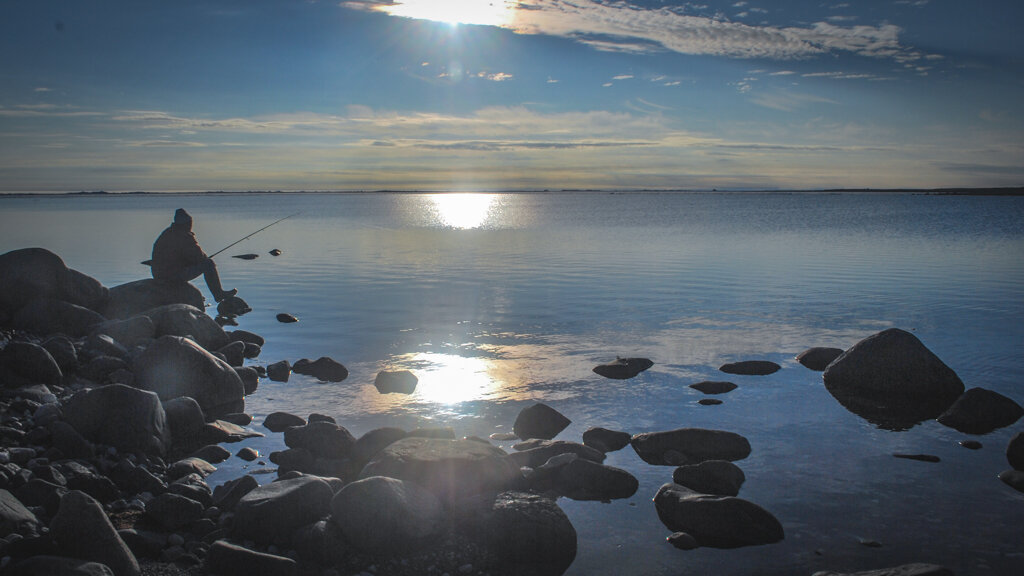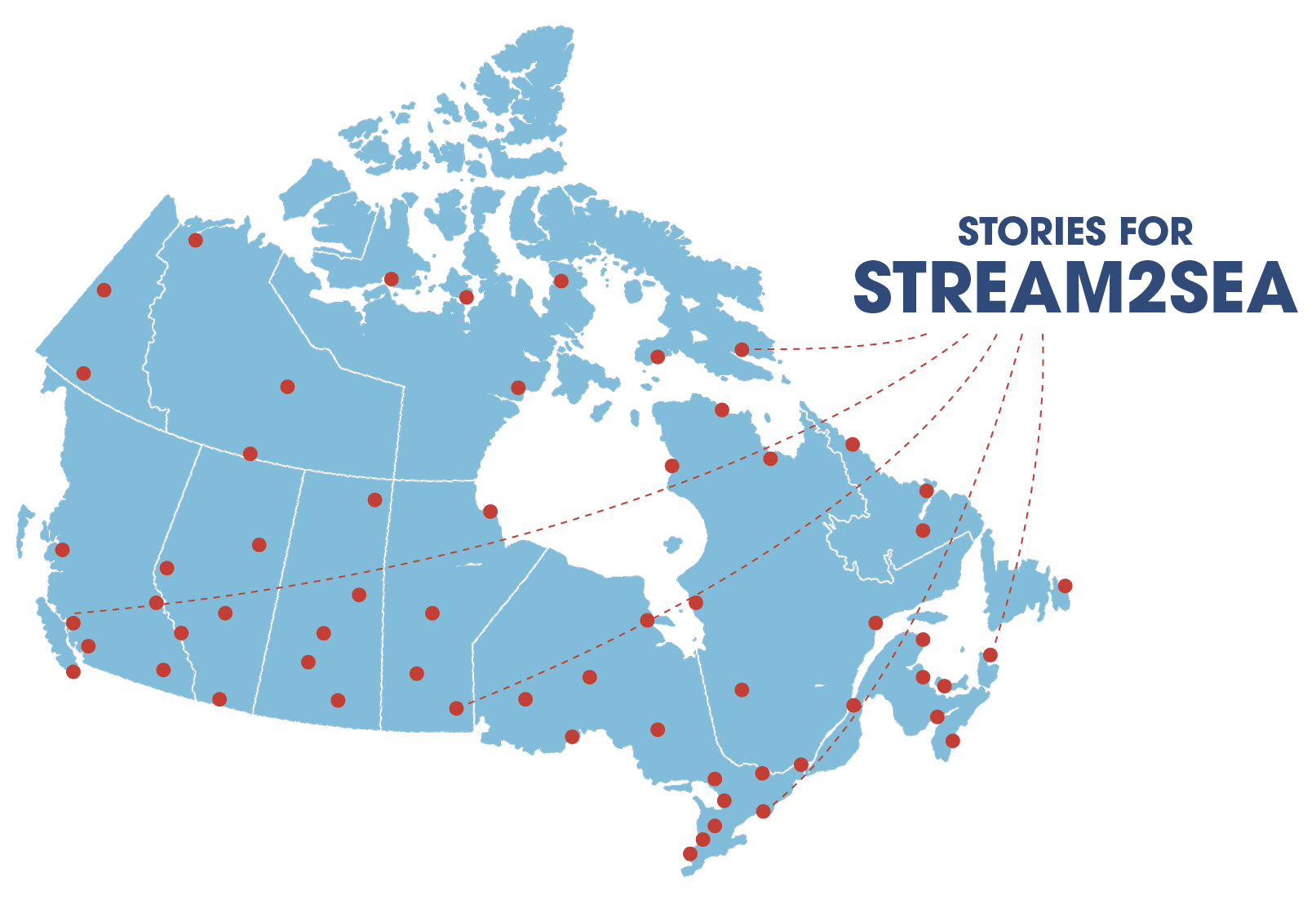
Ulukhaktok, Inuvialuit Settlement Region. Photo by Carie Hoover
A MEOPAR Fathom Fund project wants to ask you: how are you connected with the ocean?
Do you live near the seashore, with a daily view of one of the oceans that touch Canada? Is there a river or stream that runs through your town or city on its winding way to the open ocean? Maybe there’s history in your family of connection to the ocean, through a job or travel, or an old story shared at gatherings.
No matter where we live, we are all connected to the ocean and the ocean has an impact on our lives. At a time when the ocean is changing with the climate, a project called Stories for Stream2Sea wants to help everyone across Canada to consider this connection and learn how we can strengthen it, using storytelling.
“Stories are important,” says Dr. Jen McRuer, project lead on Stories for Stream2Sea. “They help us learn and inspire action. Your story, together with others, helps to inform ocean health priorities in Canada. It adds your voice to a national narrative for change.”
As the world faces a pivotal period of climate change, governments and communities are facing decisions about how to respond. In order to ensure many voices that inform that decision-making, Stream2Sea is sharing them in an accessible and interactive StoryMap. Stories for Stream2Sea is the project to collect stories to incorporate into the interactive map.
The project has it source in Land, Water, Ocean, Us: A Canadian Ocean Literacy Strategy. Launched in March 2016 by the Canadian Ocean Literacy Coalition (COLC) and supported by MEOPAR, it recognizes that a healthy, sustainable, and equitable relationship with the ocean is built on understanding, knowing, and learning about the ocean. Stream2Sea is the first national project under the strategy’s Implementation Plan’s Action Stream #5: Enhancing ocean knowledge through media communication, storytelling, and the arts.

To make sure the map tells a variety of divers stories, they are using a broad, open, community science journalism approach. Any resident of Canada is invited to participate through their website where a story guide will prompt participants. At the end, they can upload photos, videos, sound clips, music, spoken word, short stories, poetry, artwork, program outputs, or other creative pieces to help represent their story.
“The Stories for Stream2Sea project is… a result of pooling resources, ideas, and knowledge across a wide array of starting points. When I look at the project now, I see the many thoughtful and constructive perspectives that shaped it, and am reminded of the richness that comes from diversity and the importance of creating space for the inclusion of ALL voices and perspectives,” said McCruer.
The project was funded through MEOPAR’s Fathom Fund, a crowdfunding program supporting innovative marine research that will directly impact Canadians.
“This project would not have been possible without the support of MEOPAR and the Fathom Fund. The unique approach of incorporating a crowdfunding campaign to secure funding for this initiative was a valuable way to communicate the project with a public audience to generate awareness and interest.
Stories for Stream2Sea is currently accepting submissions through their interactive web platform. Learn more about the project through their website. Read the Fathom Fund project highlight here.

